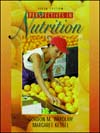 |  Perspectives in Nutrition, 5/e Gordon M. Wardlaw,
Ohio State University
Margaret W. Kessel,
Ohio State University
What Nourishes You?
Chapter 1 Summary- Nutrition is the study of the food substances vital for health and the study
of how the body uses these substances to promote and support growth, maintenance,
and reproduction of cells. Research in the field has been especially vigorous
from the past century to present times.
- Nutrients in foods fall into six classes: (1) carbohydrates, (2) lipids
(mostly fats and oils), (3) proteins, (4) vitamins, (5) minerals,
and (6) water. The first three, along with alcohol, provide energy for the
body to use.
- The body transforms the energy contained in carbohydrate, protein, and fat
into other forms of energy, which allow the body to function. Fat provides,
on average, 9 kcal/g, whereas protein and carbohydrate each provides, on average,
4 kcal/g. Vitamins, minerals, and water do not supply energy to the body but
are essential for proper body function.
- A basic plan for health promotion and disease prevention includes eating a varied diet, performing regular physical activity, not smoking, not abusing nutrient
supplements (if used), getting adequate fluid and sleep, limiting alcohol
intake (if consumed), and limiting or coping with stress.
- The
focus of nutrition planning should be on food, not primarily on dietary supplements.
The focus on foods to supply nutrient needs avoids the possibility of severe
nutrient imbalances.
- Results
from large nutrition surveys in the United States suggest that some of us
need to concentrate on consuming foods that supply more vitamin A, certain
B vitamins, calcium, iron, zinc, and dietary fiber.
- There
are no true "junk" or "bad" foods. The focus should be
on balancing a total diet by choosing many nutritious foods.
- The
scientific method is the procedure for testing the validity of possible explanations,
called hypotheses. Experiments are conducted to either support or refute a
specific hypothesis. Once we have much experimental information that supports
a specific hypothesis, it then can be called a theory. All of us need to be
skeptical of new ideas in the nutrition field, waiting until many lines of
experimental evidence support a concept before adopting any suggested dietary
practice.
|
|



 2002 McGraw-Hill Higher Education
2002 McGraw-Hill Higher Education